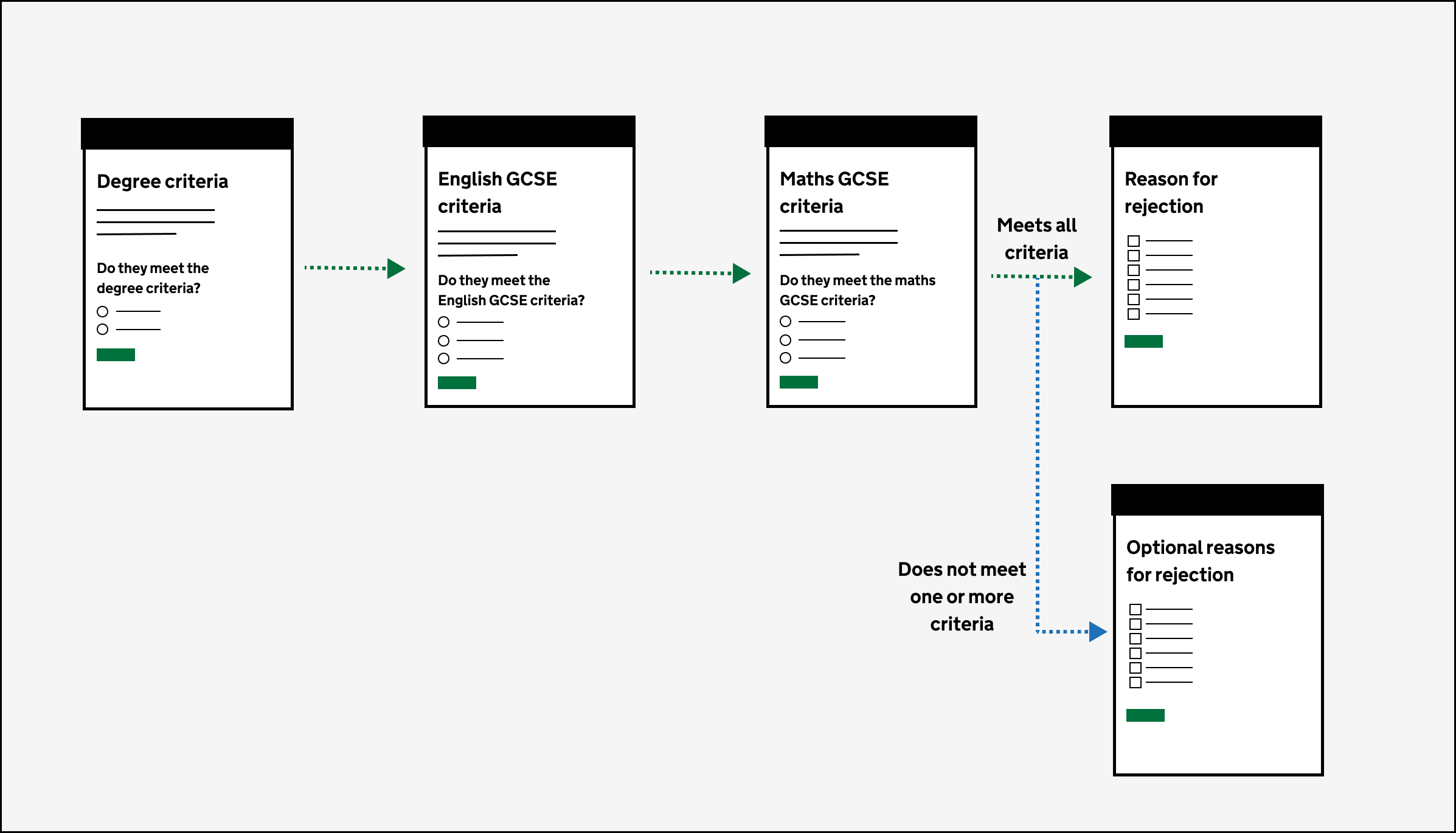
Since the 2022 to 2023 recruitment cycle started in October 2022, we’re seeing more candidates being rejected and fewer providers making offers. We created a new flow when providers reject candidates to ask if candidates met each initial teacher training (ITT) criteria to see if this would provide better support for providers in assessing candidates.
The issue
The second highest reason training providers use to reject candidates is ‘qualifications’.
Candidates need to have the following qualifications to do ITT in England:
- an undergraduate degree from a UK higher education institution or equivalent qualification
- a standard equivalent to grade 4 or C GCSE in English and maths
- a standard equivalent to grade 4 or C GCSE in a science subject (if they’re applying to teach primary)
The ITT criteria is published for training providers on GOV.UK.
Previous reporting showed that candidates who are rejected based on their qualifications often have qualifications from outside the UK or qualifications from the UK that aren’t GCSEs but are equivalent.
We also saw that eligible candidates are sometimes rejected even though they meet the ITT criteria but have maybe applied for a course they do not have qualifications in. For example, a candidate applies to a History course, but they have a degree in science.
We believe there is a lot of interpretation and ambiguity in the ITT criteria. This leads to training providers being unsure on how to assess candidates, especially if they have equivalent qualifications.
We wanted to test providers’ understanding of the ITT criteria so that we can better support them when they make decisions about candidates.
We also wanted to understand more about how providers assess candidates and who makes the final decision on an application.
What we changed
As part of the work we did to revisit the reasons for rejection, we added specific questions about if the candidate met the ITT criteria or not when a training provider decides to reject a candidate.
On each of the questions about the ITT criteria, we added a support email address. We wanted to test if training providers would use it to ask for help if they were not sure if the candidate met the ITT criteria.
Degree criteria question
We added a question about if a candidate had a degree or not. This question would only show if the candidate had entered a degree in their application form that was not recognisable. For example, a degree from a country outside the UK.
We included a snippet taken directly from the ITT criteria about degrees. We did this to purposefully test if the language was understandable to training providers.
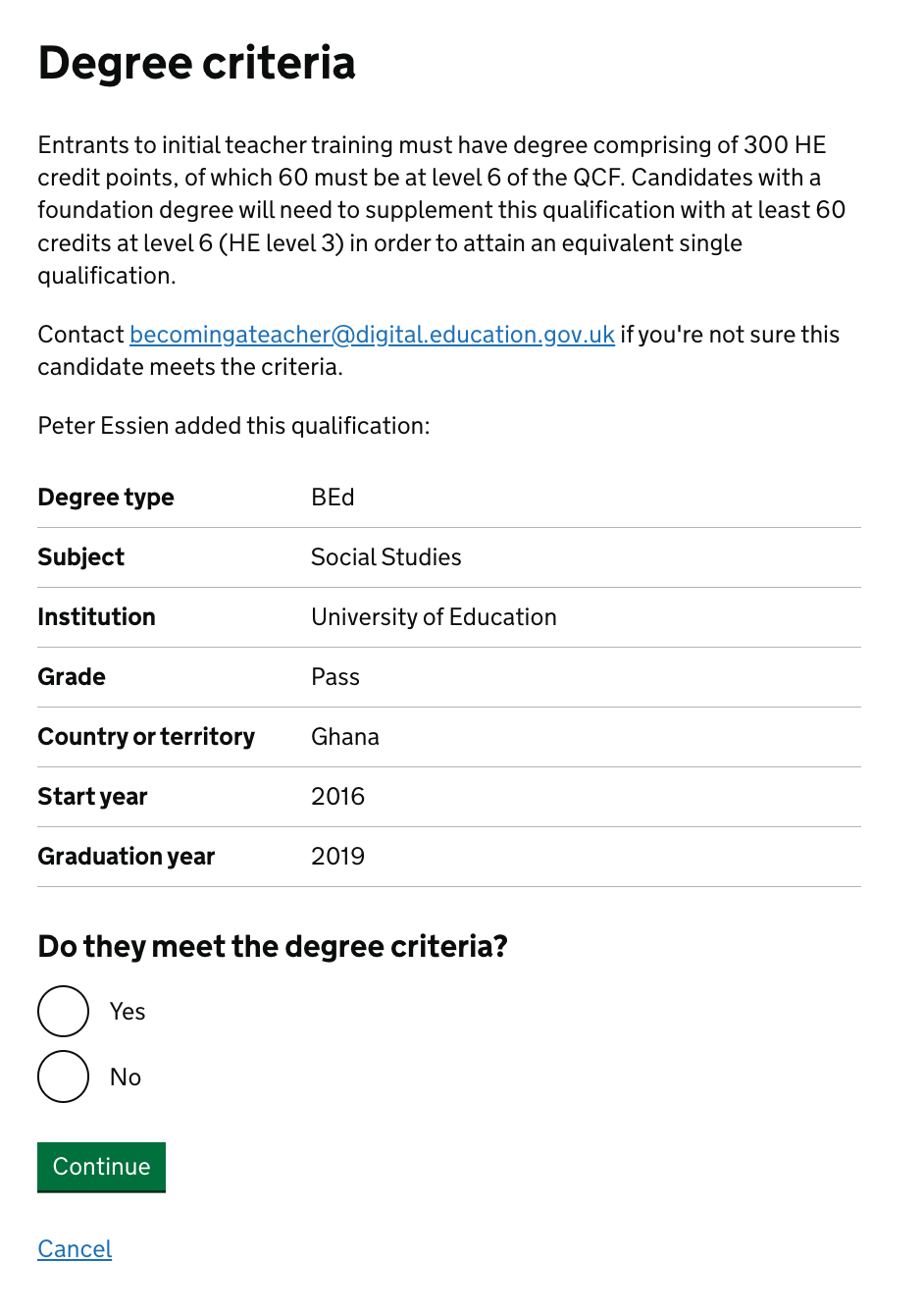
English, maths and science GCSE criteria questions
After the degree question, we included questions about if the candidate has an English and maths GCSE or equivalent. Again, these questions would only show if the candidate had entered a school qualification in their application form that was not recognisable.
We also included a snippet from the ITT criteria about GCSEs. We were particularly interested in finding out what training providers understood by “it is the standard, not the certificate, that matters” in the criteria, as we thought this was particularly unclear.
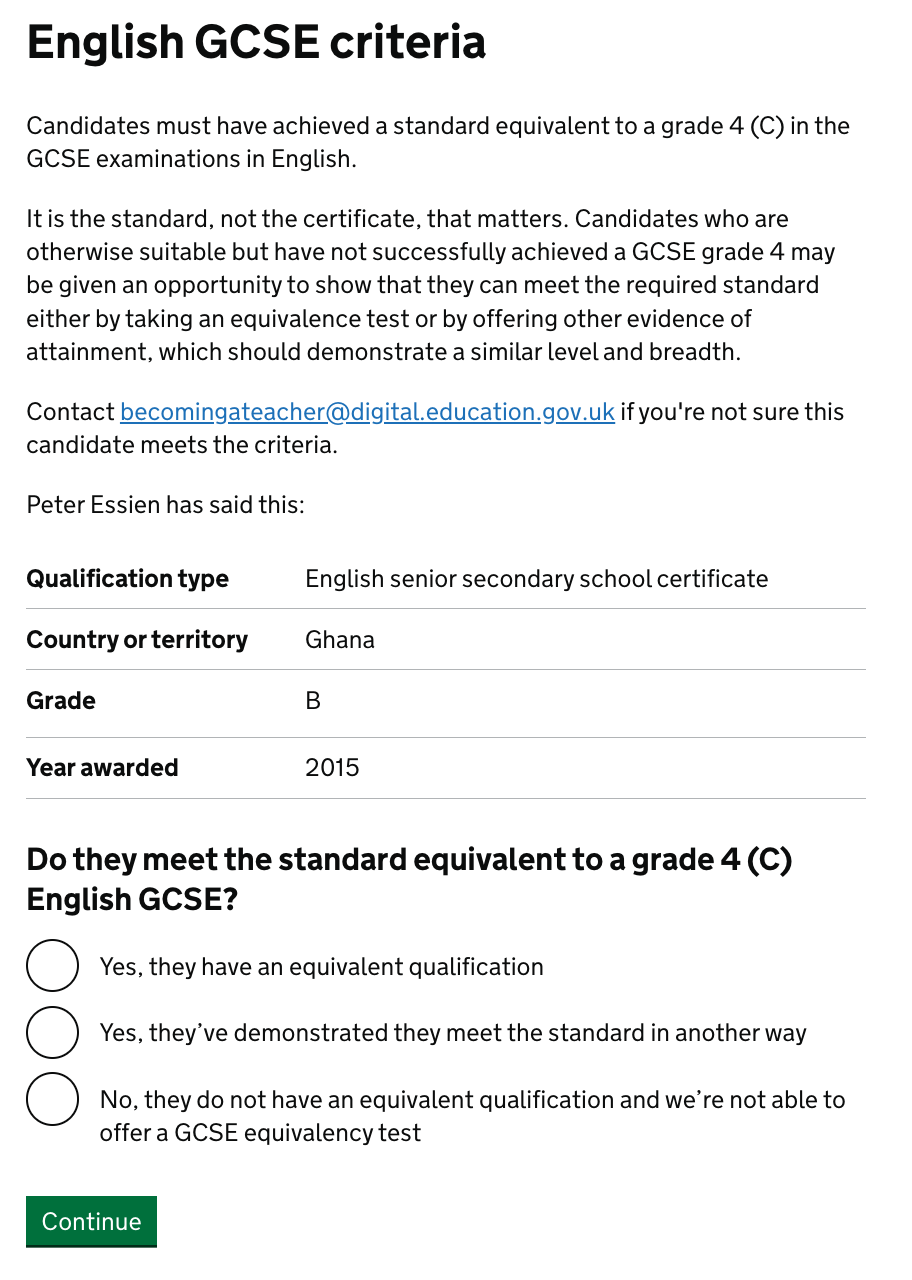
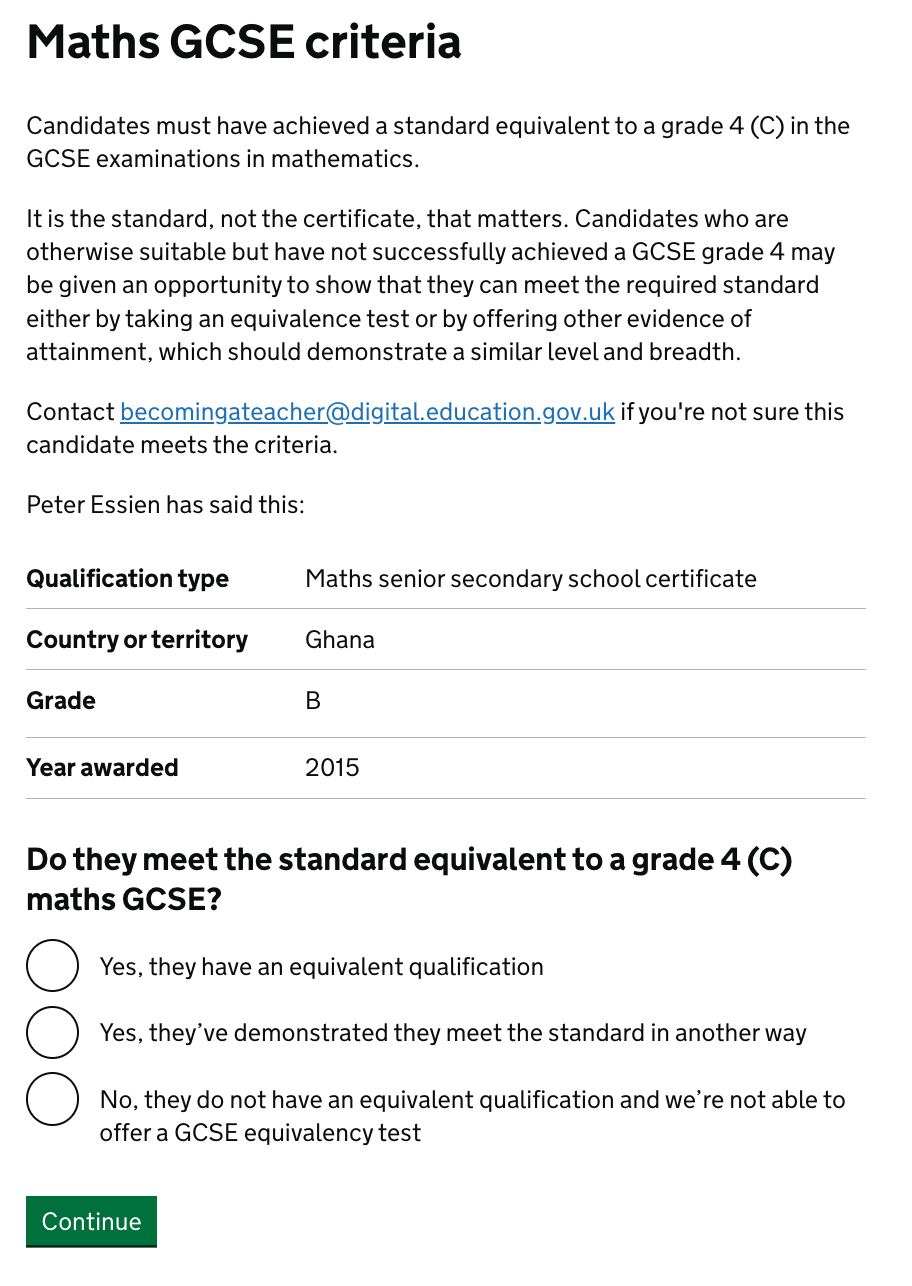
The question about science GCSEs would only show if a candidate was applying to a primary course and their science qualification was not recognisable.
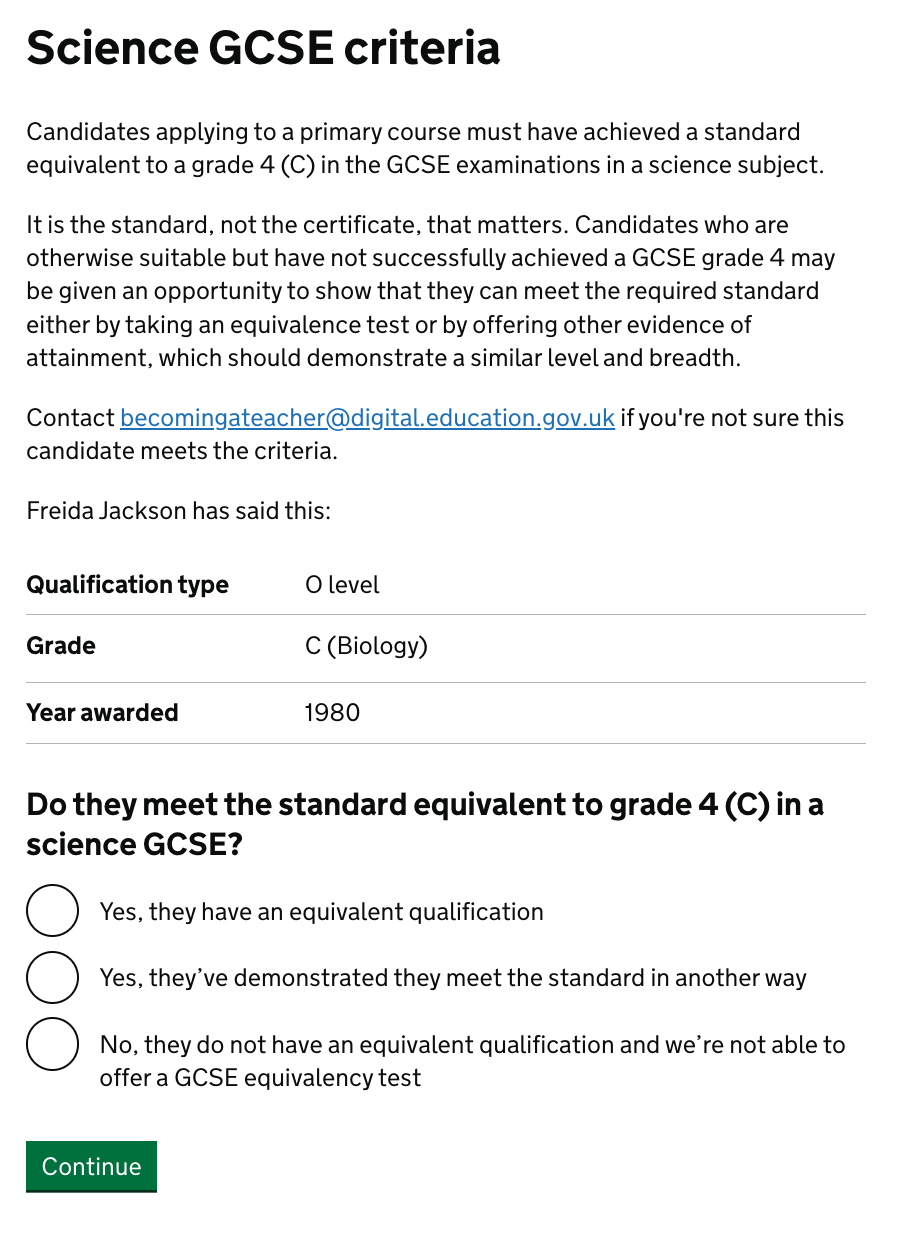
Optional extra feedback
If the training provider answered ‘No’ to any of the questions about if the candidate met the ITT criteria, we show another page where training providers could give ‘optional’ extra feedback on other aspects of the candidate’s application.
We made this optional because by answering ‘No’ to any of the previous questions about the ITT criteria, the training provider would have already given some feedback to the candidate.
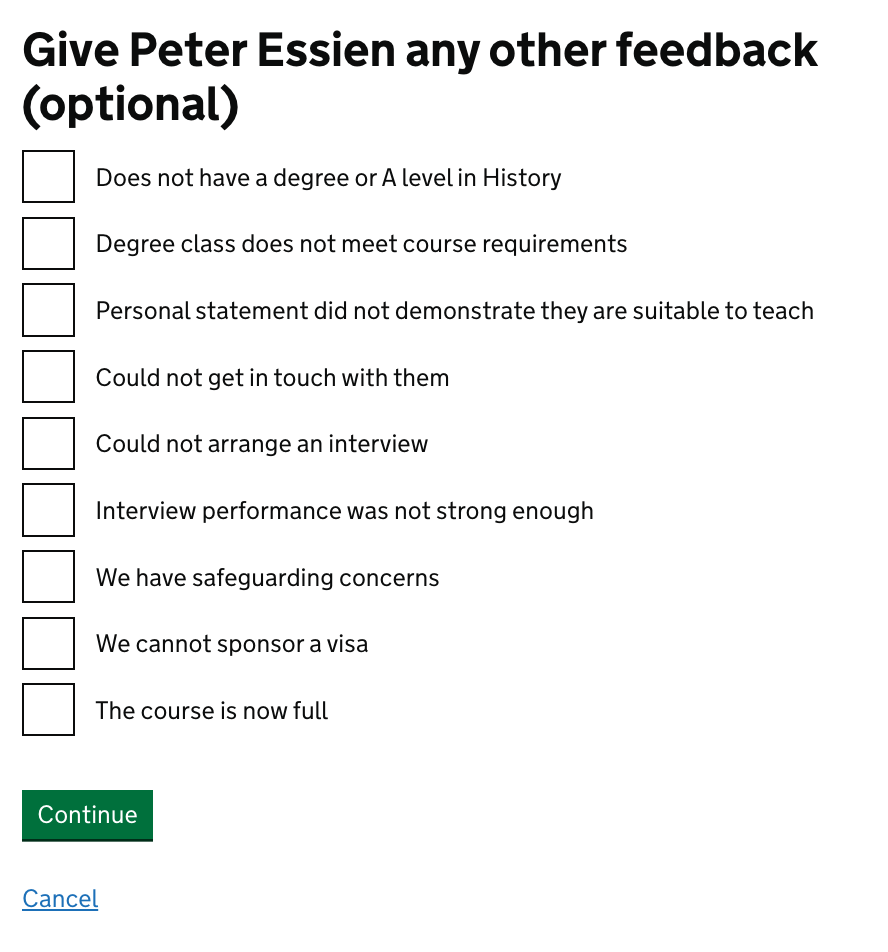
What we learnt
We tested these designs with 9 training providers from different types of organisations. 6 people had admin roles and 2 had a lead role in their ITT team.
When we tested the design we found that there were no major usability issues and providers were able to answer the questions because they would have assessed the candidate against the criteria before rejecting them.
Most issues were around the ITT criteria itself, which our team does not have control over. We found that training providers:
- hold the ITT criteria in high regard, and refer to it often when assessing candidates
- feel there is a lot of ‘grey areas’ in the ITT criteria, especially when assessing “tricky” qualifications
- find assessing international candidate’s qualifications the most time consuming – this may be leading to them rejecting these candidate prematurely
- liked the addition of the support email address but generally want more direct support – users mentioned they would go to their own teams first or would prefer a specialsed email inbox
- feel a third class degree is not strong enough for ITT – some providers mentioned that candidates need a 2:2 degree or higher to get a bursary from DfE which suggests that DfE thinks that 3rd class degrees are not the best
- are not clear on the rules around if the degree subject should match the course subject
- thought that the line “it’s the standard, not the certificate that matters” is too vague for them to use in practice
- have more difficulty in assessing GCSEs against the criteria than degrees
Future considerations
As a team, we do not have control over the ITT criteria. However, our user researcher and policy colleagues have discussed this research with the team who look after the ITT criteria on GOV.UK, so that they can use this to make the guidance clearer.
We think these designs can help training providers give better feedback to candidates and help them keep the ITT criteria in mind.